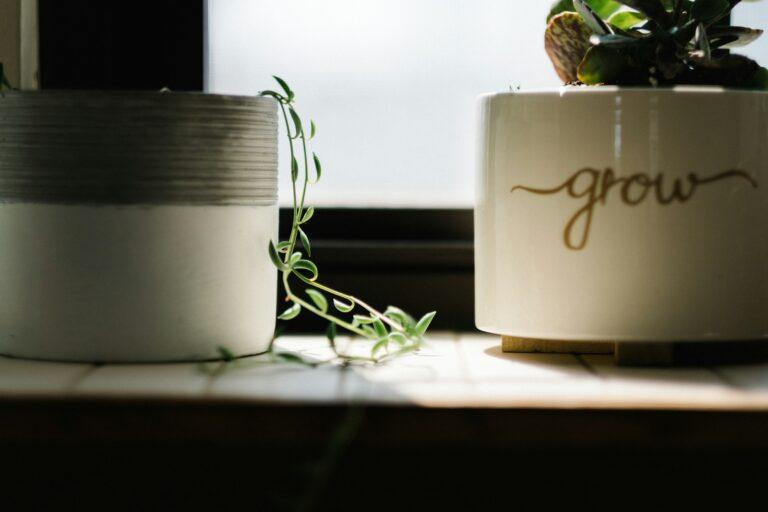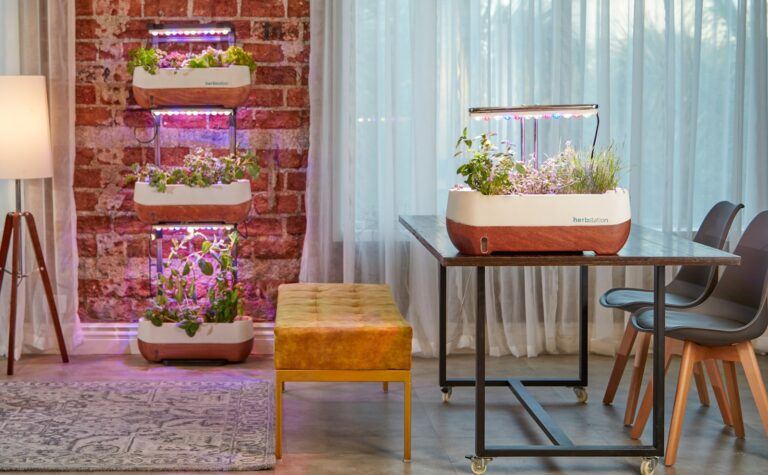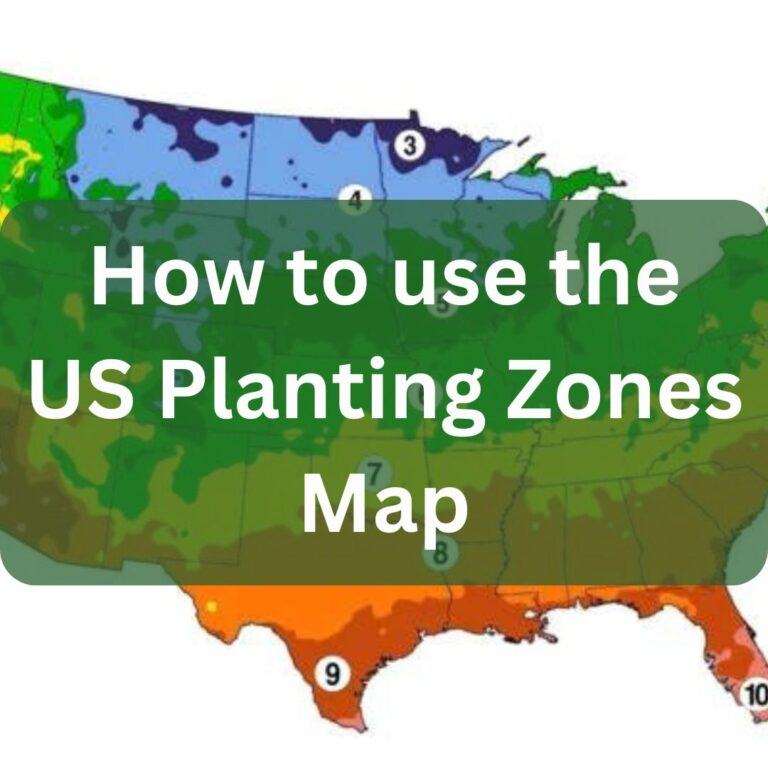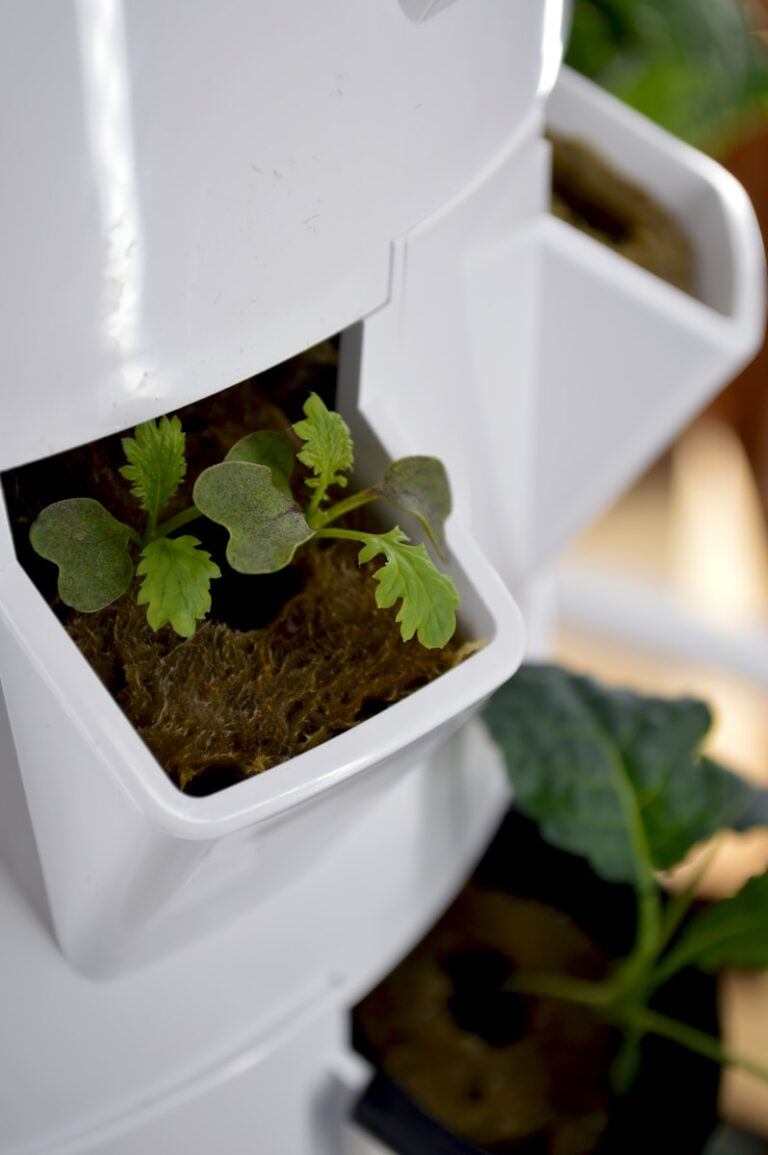10 Tips For Vertical Gardening Beginners: Essential Advice For A Thriving Garden
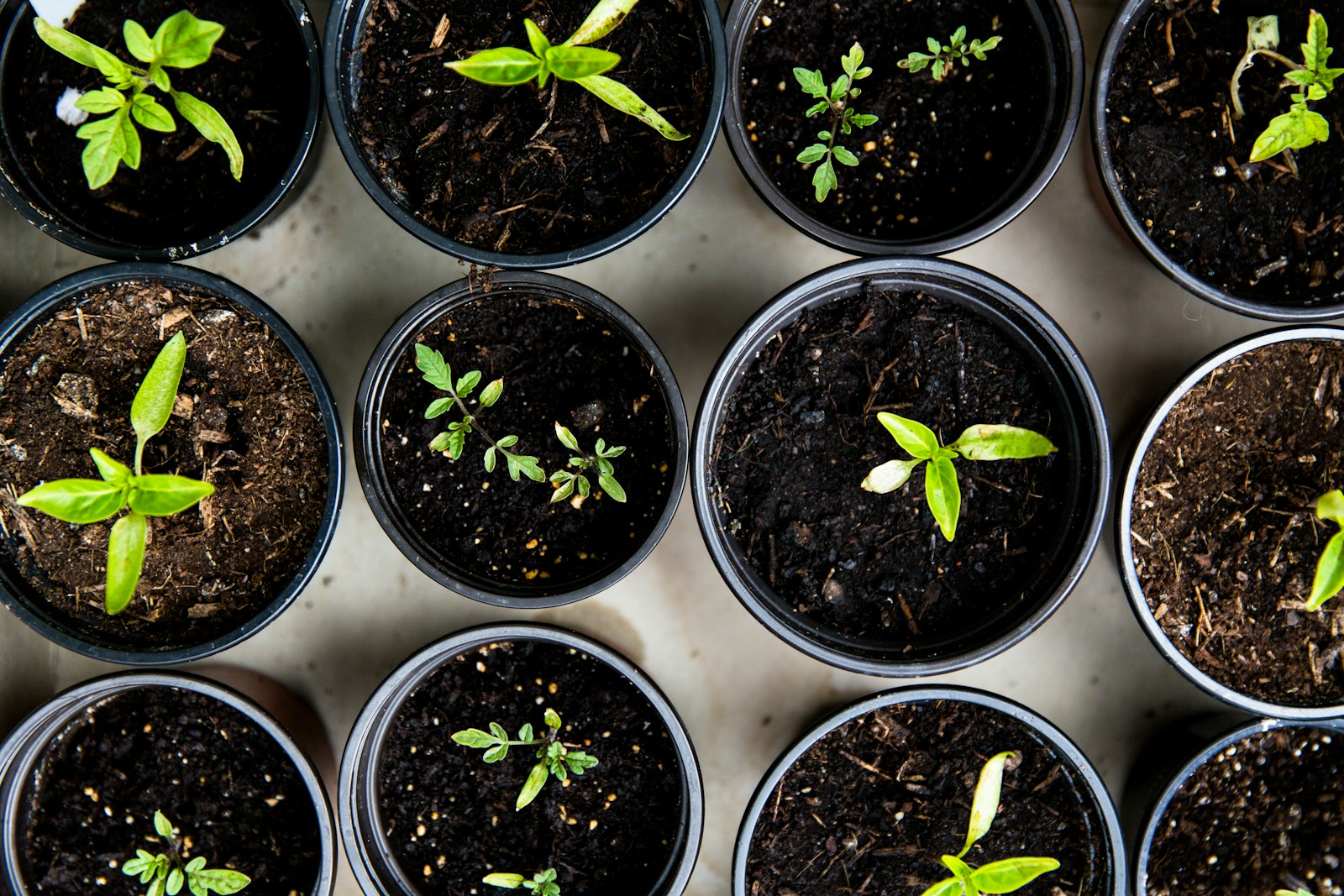
Are you new to vertical gardening and eager to make the most of your space? Whether you have a small balcony or a limited garden area, vertical gardening can be a game-changer. It’s a method that allows you to grow more plants in less space by going up instead of out. With the right approach, you can successfully grow herbs, vegetables, and even flowers in a vertical garden.

Selecting the right location and setup is crucial for your vertical garden’s success. Look for a spot that gets enough sunlight and has good air circulation. Using structures like trellises or wall-mounted panels can help support your plants as they grow upwards. To get started, consider easy-to-grow plants like mint, basil, and lettuce, which can thrive in a vertical arrangement.
Once your garden is set up, providing consistent care is essential. Pay close attention to watering needs and ensure proper drainage to prevent root rot. Regular maintenance will keep your garden healthy and productive. Keep these basics in mind, and you’ll be on your way to achieving a flourishing vertical garden.
Key Takeaways
- You can grow more plants in less space by gardening vertically.
- Proper setup and sunny location are important for success.
- Regular maintenance and good drainage are crucial for healthy plants.
Choosing the Right Location and Setup

Selecting the perfect spot and setup for your vertical garden can make all the difference. You’ll want to ensure optimal sunlight and space, understand the types of vertical gardens, and install the necessary supports.
Assessing Light and Space
Light Requirements: Most plants need 6-8 hours of sunlight daily to thrive. Check the amount of sunlight your potential garden area receives throughout the day. Be mindful of trees, walls, or other structures that can cast shadows.
Space Considerations: You can create a vertical garden in many places such as walls, fences, and balconies. Measure the area where you plan to set up your garden. Know how much room each plant needs to grow without overcrowding.
Types of Vertical Gardens

Living Walls: These are panels of plants grown vertically using hydroponics. They are usually attached to an indoor or outdoor wall for space efficiency.
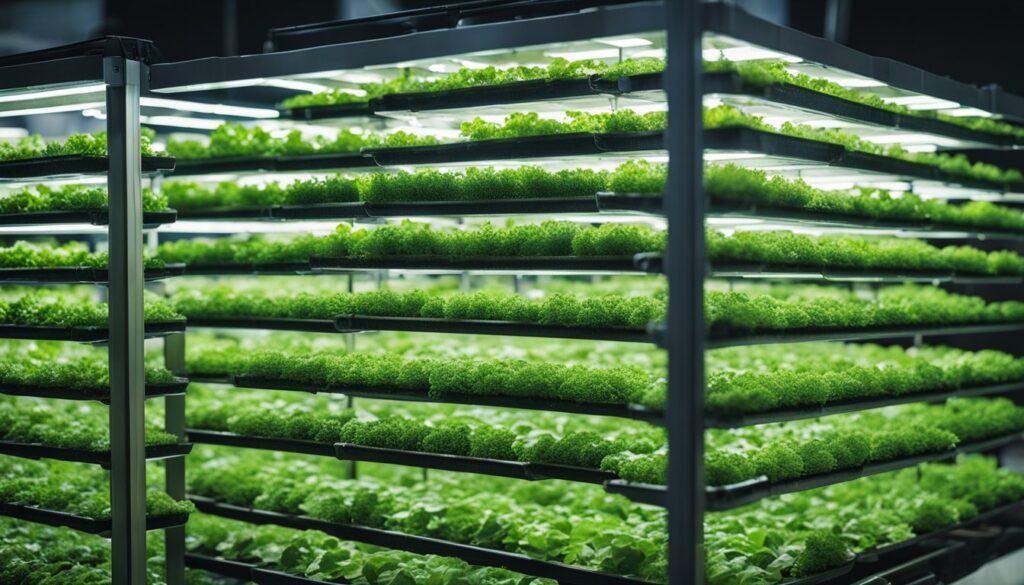
Green Walls: Similar to living walls, green walls can be freestanding or attached to a structure. They often feature more diverse plants and support better insulation.

Hanging Baskets: Best for herbs and flowers, hanging baskets can maximize small spaces like balconies. Ensure the baskets have proper drainage and are securely fastened.

Vertical Planters Towers: These are systems designed to grow plants vertically, typically in a stacked or tiered arrangement. They can be used indoors or outdoors and are suitable for a variety of plants, including herbs, flowers, and even some vegetables.
Some vertical planters utilize hydroponic or self-watering systems to efficiently nourish the plants.
Installing Supports and Trellises
Types of Supports: Use trellises, stakes, or lattice structures to support climbing plants. These supports help plants grow vertically, freeing up ground space and enhancing air circulation.
Proper Installation: Install supports before planting to avoid disturbing the roots. Securely fix supports to your chosen wall or structure using brackets, screws, or ties.
Maintenance Needs: Regularly check the stability of your supports and trellises. Climbing plants can become heavy and need sturdy support to prevent collapse or damage.
Carefully selecting your vertical garden’s location and setup can significantly enhance plant growth and ease maintenance.
Selecting the Best Plants for Your Garden

Choosing the right plants is essential for a successful vertical garden. Focus on plants that thrive when grown vertically and consider their specific needs such as sunlight and watering.
Vegetables and Fruits to Grow Vertically

Growing vegetables and fruits vertically saves space and can lead to a healthier garden. Tomatoes and pole beans are excellent choices as they naturally climb supports. Cucumbers and sweet potatoes also grow well vertically, reducing the risk of diseases that come from lying on the ground. Vining tomatoes and various fruit trees like dwarf apple or pear trees can also adapt well to vertical farming. Remember to use sturdy supports like trellises or netting for these plants.
Including Flowers and Foliage

Incorporating flowers and foliage into your vertical garden adds beauty and diversity. Climbing roses and ivy are popular for their ability to cover walls and trellises elegantly. Smaller flowering plants like petunias and hostas provide vibrant colors and can thrive in wall planters and baskets. Succulent plants are another great option because they require less water and maintenance. Using a mix of these plants can create visual interest and attract beneficial insects to your garden.
Understanding Plant Needs
Understanding the specific needs of your plants is crucial. Leafy greens like lettuce and spinach require moderate sunlight and frequent watering. Herbs such as mint and basil also thrive in vertical gardens with ample sunlight and well-drained soil. For climbing plants, ensure they have proper supports and space to grow vertically. Regularly check the moisture levels and provide adequate nutrients. Tailoring care to each plant type ensures your garden not only looks good but is productive and healthy year-round.
Irrigation and Drainage Considerations

Proper watering and good drainage are crucial for a healthy vertical garden. Setting up an efficient watering system ensures your plants get the right amount of moisture. Managing soil moisture and aeration promotes root health and prevents waterlogged or dried-out plants.
Setting Up an Efficient Watering System
Installing a drip irrigation system is one of the best ways to water your vertical garden. This system delivers water directly to the soil at the base of each plant. It helps reduce water waste and target the roots efficiently.
Use a timer to automate your watering schedule. Timers prevent over-watering and under-watering by ensuring a consistent water supply. You can also consider using sprinkler systems or capillary mats, but make sure they suit your specific garden design.
Regular inspection is key. Check your irrigation system often for leaks or clogs to maintain uniform water distribution. This avoids dry spots or puddles that can harm your plants.
Managing Soil Moisture and Aeration
Good drainage is vital to prevent root rot and promote healthy growth. Ensure your vertical garden has adequate drainage holes. These should be placed at the bottom of each layer or container.
Use well-aerated soil, like a mix of compost and perlite, to ensure roots get enough air. Compact soil can suffocate roots and lead to poor plant health.
Consider using a moisture meter to monitor soil moisture levels. This helps you adjust your watering schedule accurately.
Lastly, ensure proper air circulation around your plants. This helps avoid mold and mildew, which can thrive in damp conditions. Regularly prune your plants to improve airflow.
Ongoing Care and Maintenance

For a thriving vertical garden, regular care and maintenance are key. This includes essential tasks like pruning and training plants, preventing pests and diseases, and timely harvesting.
Pruning and Training Plants
Pruning helps keep your vertical garden healthy and productive. Regularly remove dead or yellowing leaves to promote airflow and prevent diseases.
Train your plants to grow vertically by using supports like trellises, stakes, or cages. This supports the weight of the plants, especially for heavier crops like tomatoes or squash.
Tie stems gently with soft ties to guide their growth. Watch for overcrowding and trim back if necessary to ensure each plant receives enough light and nutrients.
Preventing Pests and Diseases
A healthy vertical garden can still be vulnerable to pests and diseases. Inspect plants regularly for signs of trouble. Common pests include aphids, spider mites, and whiteflies.
Use natural pest control methods like introducing beneficial insects (ladybugs or lacewings). Keep your garden clean by removing any fallen leaves or debris that could harbor pests or diseases.
Water plants early in the day to allow leaves to dry, reducing the risk of fungal diseases. Avoid overcrowding, which can create humid conditions that encourage diseases. Rotate crops yearly to minimize soil-borne pathogens.
Harvesting Your Vertical Garden
Knowing when and how to harvest is crucial for plant health and yield. Regular harvesting encourages continuous production in many plants. Pick fruits and vegetables at their peak ripeness for the best flavor and quality.
For leafy greens, harvest the outer leaves first, allowing the inner leaves to continue growing. Vine plants like tomatoes and cucumbers should be picked regularly to prevent overloading the plant.
Use clean, sharp tools to avoid damaging the plants, which can make them susceptible to diseases. Proper harvesting techniques help maintain the plant’s energy and maximize your garden’s output.
Frequently Asked Questions

Starting a vertical garden as a beginner involves knowing which components are essential, how to efficiently use your space, and what plants to select. DIY tips and common pitfalls are also helpful to understand for greater success.
What are the essential components to start a vertical garden for beginners?
You need a sturdy structure, such as a trellis, wall, or fence. Good quality soil, proper irrigation system, and adequate sunlight are also important. Having the right tools, like pruning shears and watering cans, will help maintain your garden.
How do you efficiently utilize small spaces for vertical vegetable gardening?
Choose compact or dwarf varieties of vegetables. Use vertical structures like wall-mounted planters, hanging pots, or stackable planters to maximize space. Ensure that you arrange the plants so they get ample sunlight and are easy to water and harvest.
Which plants are best suited for growing in vertical gardens?
For beginners, easy-to-grow plants like herbs (mint, basil), leafy greens (lettuce, spinach), and climbing vegetables (beans, tomatoes) are ideal. These plants are less demanding and adapt well to vertical structures.
Can you provide some DIY tips for constructing a vertical garden at home?
Use recycled materials like old pallets, shoe organizers, or plastic bottles to create planters. Make sure to use waterproof liners to protect the walls. Install a simple drip irrigation system to ensure consistent watering without overdoing it.
What are the common pitfalls to avoid in vertical gardening?
Avoid overcrowding the plants, as this can lead to poor air circulation and disease. Be mindful of the weight of the plants and soil to prevent the structure from collapsing. Also, ensure the plants have enough sunlight and water.
Which vertical gardening system is the most effective for novices?
Wall-mounted planters and simple trellis systems are effective for novices. They are easy to set up and manage. Stackable planters and tiered systems also work well for beginners who want to grow a variety of plants in a small space.
